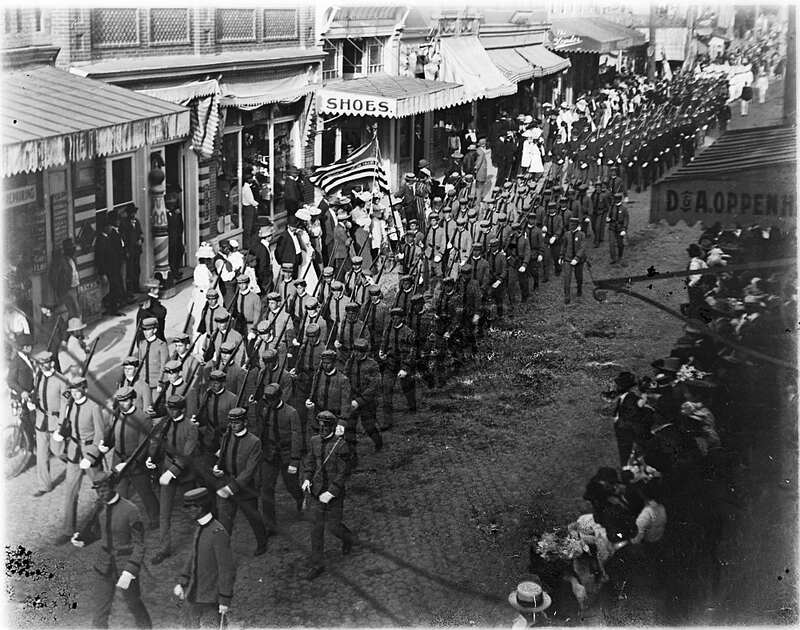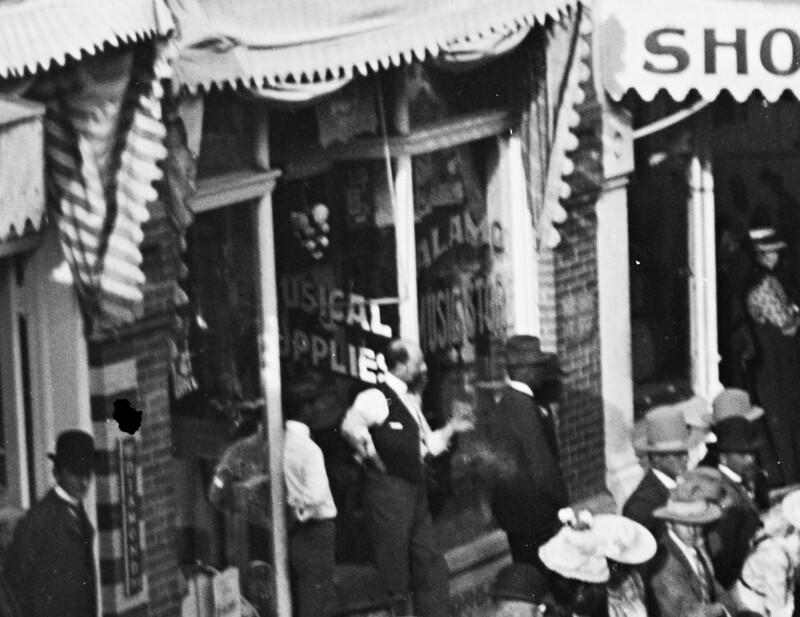Destination San Antonio, Texas
The following three photographs were simple to group together because they were taken from the same vantage point. That is, the traffic changes, but the storefronts do not, so we know the photographer was stationary when taking these images. It does not require a stretch of the imagination to say that these images show a parade, but it took further research to name this parade and say when and where it was photographed.
This first image (left) gives us a strong lead to figuring out where the parade was when our photographer snapped this shot. On the right, we can see part of the D&A Oppenheimer Bank awning. The Handbook of Texas Online, the University of Texas San Antonio (UTSA) photo archives, and the Portal to Texas History provide documentation which puts the Oppenheimer Bank on Commerce Street between Navarro and Saint Mary's streets, from 1891-1912.
Zooming in on the image above, we can read on a storefront window the words "Alamo Music Store." Using newspaper advertisements from the Portal to Texas History, we were able to place the Alamo Music Store on Commerce St. between 1907-1911. One could purchase music equipment or take lessons at the Alamo Music Store.
Identifying both the Oppenheimer Bank and the Alamo Music Store, and their addresses on Commerce Street, confirms a location for photographs of this parade. The businesses also give us a another date range to help identify when the images were taken.
Details in the image to the left help us add historical context to this parade. Note the floral decorations covering the carriage, the large boutonnières worn by the mounted soldiers, and the lavishly decorated hats and umbrellas of the women on-board. The UTSA photo archives and the San Antonio Express News have images online that show a tradition of this type of floral decoration for the Battle of Flowers Parade held in San Antonio, Texas, starting back in 1891, to honor the heroes of the Alamo and the Battle of San Jacinto. Research revealed that mounted units were not included in the parade until after 1904.
The appearance of mounted units (1904) and the Alamo Music Store's years of operation (1907-1911) update the probable starting date range for this collection. Thus, we can add a fourth and fifth datapoint to the timeline.




